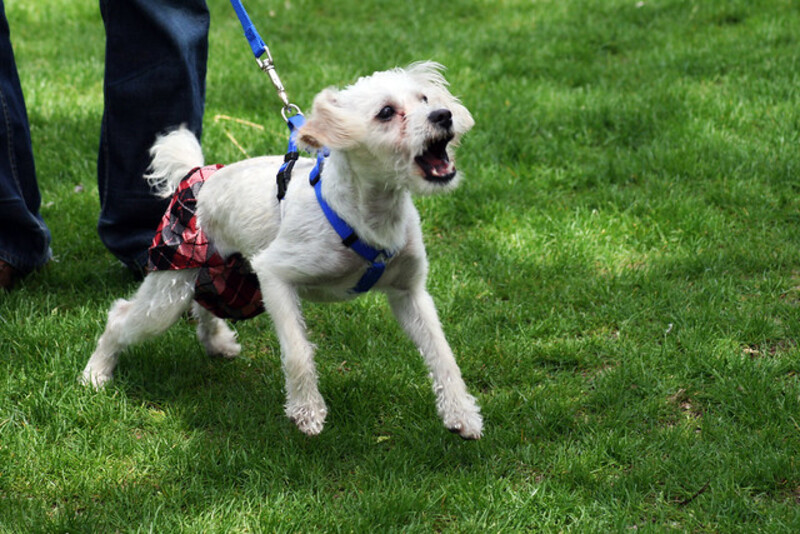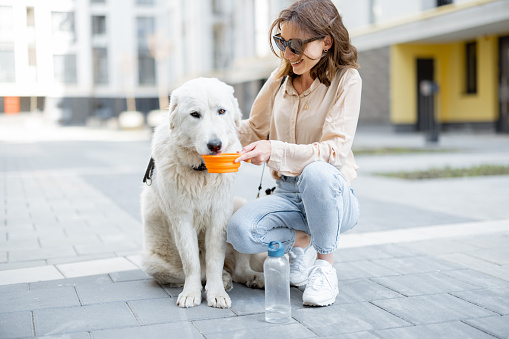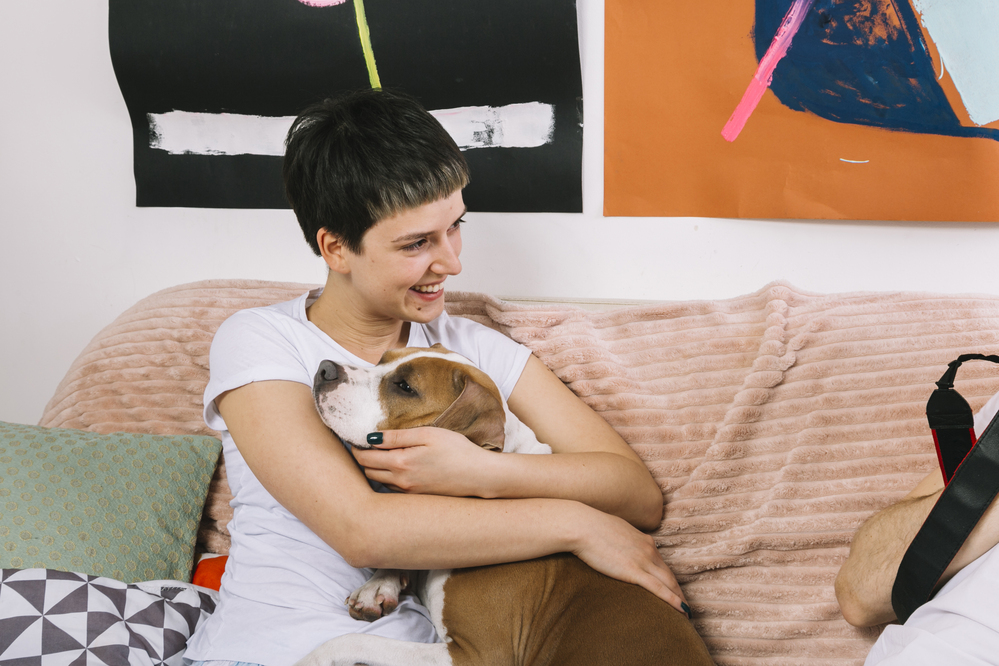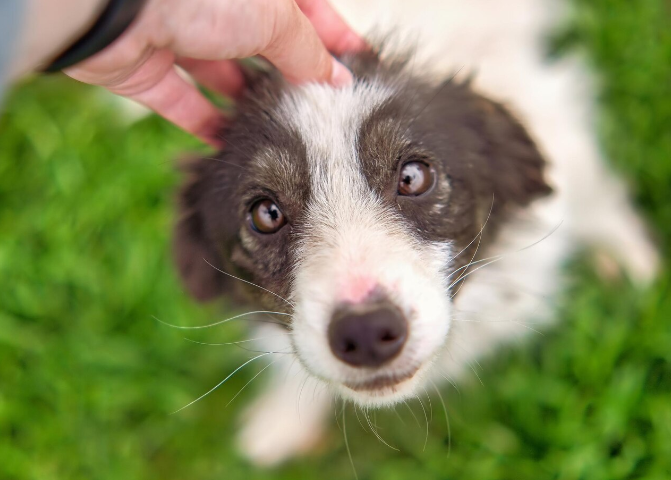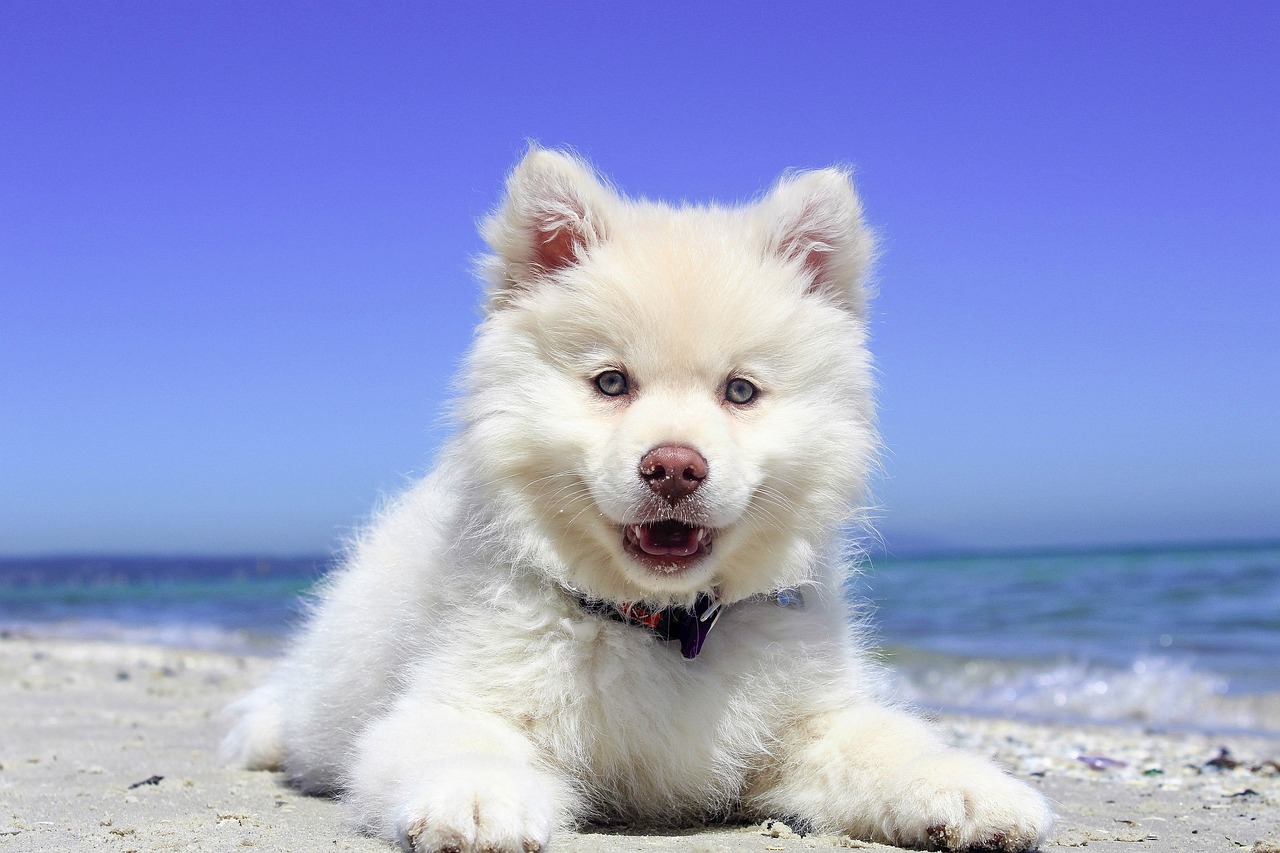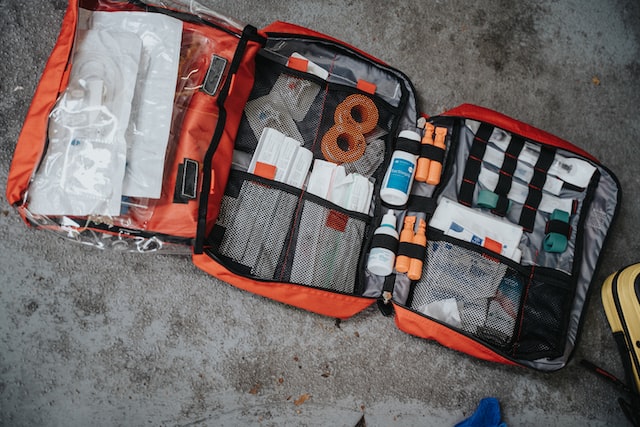- Key Takeaways
- Does Southwest Airlines Accept Emotional Support Animals?
- General Requirements to Fly with a Pet/ESA on Southwest
- Southwest Airlines - Pet/ESA Fees
- Pet Carrier Requirements
- How Many Pets/ESAs Can You Bring?
- Destination-Specific Regulations for Flying with Pets/ESAs
- Pet/ESA Requirements at the Airport
- Pet/ESA Requirements on the Plane
- Does Southwest Airlines Accept Service Dogs?
- What Types of Service Dogs Does Southwest Accept?
- Documentation Required for Flying with Service Dogs
- Service Dogs on Southwest - General Requirements
- Service Dogs At the Airport
- Service Dogs on the Plane
- Destination-Specific Requirements for Flying with Service Dogs (Hawaii, Puerto Rico, Internationally)
- Where Are Service Dogs Not Allowed to Travel?
- Can You Train Your Own Dog as a (Psychiatric) Service Dog?
- Why Train Your Dog With Service Dog Training School International?
- FAQ
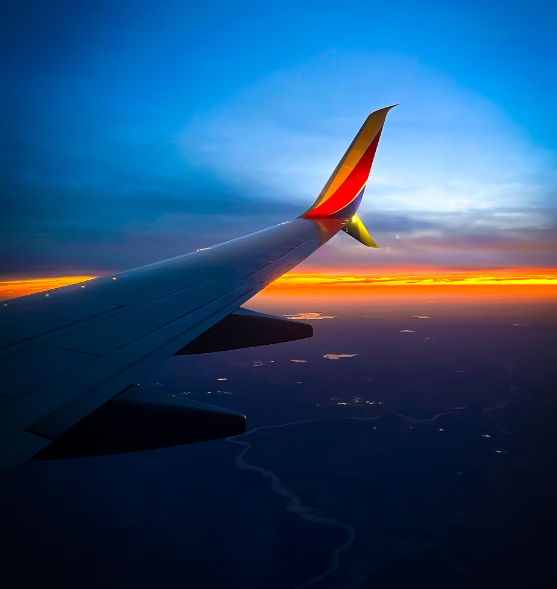
Key Takeaways
- Does Southwest Airlines Accept Emotional Support Animal (ESA)?
Similar to most other carriers, Southwest Airlines no longer recognizes ESAs as service animals, meaning they must follow the same guidelines as standard pets.
- Does Southwest Airlines Accept Psychiatric Service Dog?
Yes, Southwest Airlines accepts psychiatric service dogs as legitimate service animals. Psychiatric service dogs are trained to perform specific tasks that assist individuals with psychiatric conditions, such as anxiety, PTSD, or depression. These dogs can fly free of charge, but travelers must provide the required documentation, such as a completed DOT Service Animal Air Transportation form, and may need to give advance notice to the airline before their flight.
- Do Service Dogs Fly for Free?
All service dogs, including psychiatric service dogs, that meet Southwest Airlines’ requirements can fly at no additional cost.
- How to Get a Psychiatric Service Dog:
To get a psychiatric service dog, the dog must be trained to perform specific tasks that assist with your disability. If you already have a dog, the professionals at ServiceDogTrainingSchool can help you to train your own dog to be the ideal service dog to meet your needs.
- How to Qualify for a Psychiatric Service Dog:
To qualify for a psychiatric service dog, you must have a diagnosed mental or emotional disability, such as anxiety, PTSD, depression, or bipolar disorder.
- How to Get Started:
Get started by taking the simple SDTSI online PSD training assessment to see if you qualify, and enroll in the Psychiatric Service Dog Training Course to train your own dog.
Whether it is the holiday season, you enjoy traveling, or travel is a part of your work, you need proper preparation. If you plan to bring your beloved furry friend as a pet, Emotional Support Animal or Service Dog, you should take time in advance to ensure they meet the airline’s requirements and will be accommodated.
Southwest Airlines is one of the major US airlines that operates flights to 121 destinations in the US and ten other countries.
This article aims to help those planning to bring their Emotional Support Animal or Service Dog, including a Psychiatric Service Dog, on Southwest Airlines
Does Southwest Airlines Accept Emotional Support Animals?
This is due to the U.S. Department of Transportation’s final rule on flying with service animals, which came into effect in December 2020. According to this rule, emotional support animals are no longer considered service animals. This, in turn, results in limited access rights for ESAs. The full text on what the final rule states can be found on the website of the U.S. Department of Transportation.
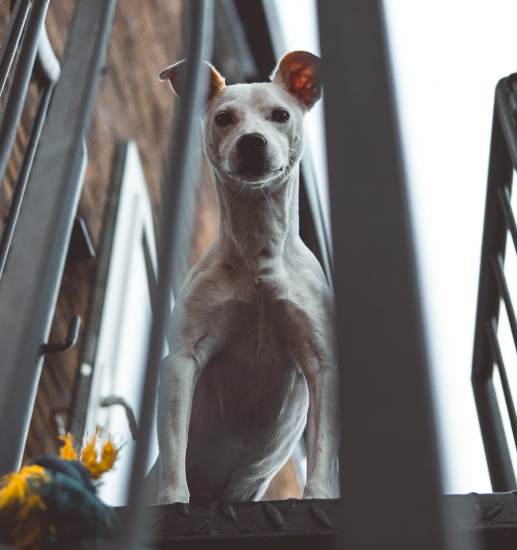
Does Southwest Airlines Accept Emotional Support Animals as Pets?
Yes, the airline does accept ESAs as part of their pet policy. Southwest Airlines specifies that customers are allowed to travel with certain animals in compliance with their pet program for a fee.
Only dogs and cats that meet the applicable requirements for travel will be accepted in the cabin.
General Requirements to Fly with a Pet/ESA on Southwest
If you are planning to travel with your pet on Southwest, please review the following requirements:
-The airline accepts small, domestic dogs and cats who are vaccinated.
-Your pet must be in an appropriate pet carrier in the cabin (valid for flights within the US).
-Domestic dogs and cats must be no younger than 8 weeks of age to be accepted by the airline.
-Unaccompanied minors are not allowed with pets.
Southwest Airlines - Pet/ESA Fees
There is a fee of $125 for each way per pet carrier (valid for US mainland flights).
If you will be flying between Hawaiian Islands, you will be charged $35 each way, per carrier.
You may be interested to know that you can buy a pet carrier at the ticket counter for $58.
You will need to pay for your pet (a Pet Fare) at the airport ticket counter and use an accepted credit card. You are eligible for a refund for the Pet Fare if you cancel your booking or if do not re-book your flight in case it has been canceled.
In such cases, you are advised to contact the airline or visit their ticket counter to request a refund.
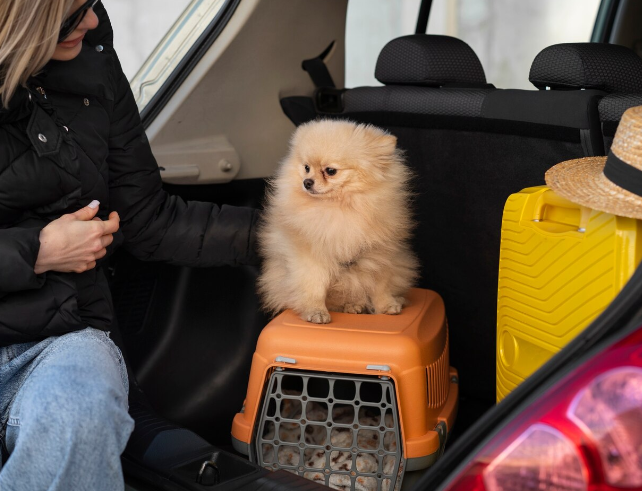
Pet Carrier Requirements
You must bring a carrier that fits under the seat in front of you. Your paw friend must be able to easily move and stand up while inside. Also, the airline specifies that the pet must be entirely in the carrier.
Pet carriers have to fulfill the following requirements:
-Must be specifically designed as pet carriers; both hard-sided and soft-sided carriers are accepted.
-Must be watertight and well-aerated.
Allowed Dimensions:
-Southwest Airlines Pet Carrier : 17” (L) x 10” (W) x 9.5” (H).
-Other pet carriers with maximum dimensions of: 18.5” (L) x 13.5” (W) x 9.5” (H).
Based on the information on the airline’s website, pet carriers are viewed as a personal item or a carry-on item. This means that pet owners have two options to board the plane:
-With a pet carrier and a personal item;
or
-With a pet carrier and a carry-on bag (regular size).
Make sure to secure your dog or cat in a carrier at all times while at the gate; boarding or deplaning, as well as during the flight. If you do not meet the airline’s requirements, your pet may be denied access to the aircraft.
How Many Pets/ESAs Can You Bring?
The airline permits one pet carrier pet passenger. No more than two pets (a small dog or cat) of the same species are allowed in a carrier.
To avoid issues due to insufficient space, the airline asks passengers to call them to make their reservations in advance.
Destination-Specific Regulations for Flying with Pets/ESAs
To/from Hawaii
According to Southwest’s policy, pets are not permitted on flights to/from Hawaii.
Hawaiian Islands
Pets are allowed to travel on flights between Hawaiian Islands. Below, we will quote a portion of the Animal Quarantine Information listed on the website of the Animal Industry Division in Hawaii:
“COVID-19 ADVISORIES
OIE-FAVN TESTS
OIE-FAVN testing laboratories are experiencing longer than usual processing times. Test results may be delayed between 1 to 2 months.
-
Plan accordingly to avoid arriving in Hawai`i without a passing test result.
-
Confirm that the Animal Quarantine Station has your pet’s passing test result before arriving in Hawai`i. To see if your pet’s OIE-FAVN test result was received by AQS, click here.
-
Neighbor Island Inspection Permits will not be issued without a confirmed passing FAVN test result.
-
FAVN reports that are submitted upon arrival, whether original or photocopy, must be verified with the lab first. Pet will not qualify for DAR in this case and will enter quarantine until testing laboratory confirms test results.
It is strongly advised that the FAVN test be done well in advance so that a passing FAVN is obtained before requesting a Neighbor Island Inspection Permit. Failing to do so has resulted in pet owners not obtaining a Neighbor Island Inspection Permit in time for their flight.”
The minimum waiting period after a successful FAVN rabies antibody test before arriving in Hawaii is 30 days.
The minimum waiting period after most recent rabies vaccination before arriving in Hawaii is also 30 days.
Puerto Rico
If you are planning to fly with your pet to Puerto Rico, make sure to familiarize yourself with the specific airline’s requirements for traveling to this destination.
Below, we will quote some portion of the information that may help you plan your trip more effectively:
“• Dogs and cats do not need a PRDA import permit for interstate movement.
• All dogs and cats entering Puerto Rico shall be accompanied by an official health certificate stating that the animal did not originate from an area quarantined for rabies. An official certificate veterinary inspection signed by an accredited veterinarian in the state or territory of origin and will be valid for 30 days from the inspection date. (This is not a standard form. Each state of origin may use or provide different interstate forms, CVI, including USDA APHIS form 7001 which can be used for interstate and international purpose).
• All dogs and cats over four (4) months of age must be vaccinated against rabies within six (6) months prior to the date of shipment, shall be properly identified and accompanied by a certificate of vaccination against rabies.
• Treatment for external parasites within 72 hrs. prior to entry and so stated on the health certificate by the accredited veterinarian.
• An official individual identification (microchip or a collar with metallic ID Tag)”.
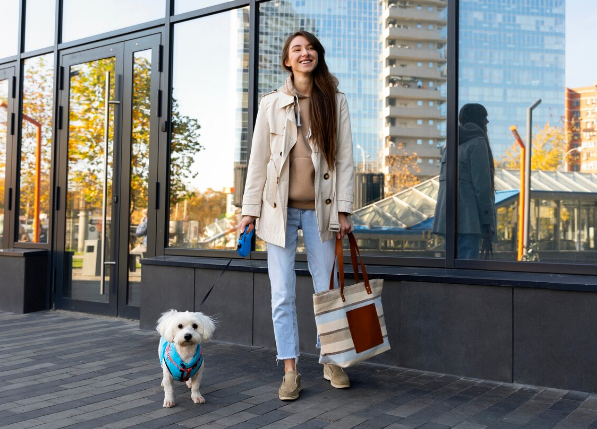
Pet/ESA Requirements at the Airport
We will list some important factors you should consider when with your pet/ESA at the airport:
-
You need to pay the pet fee at the airport ticket counter with an accepted credit card.
-
At security, you must hold your ESA/pet while the pet carrier passes through the X-ray machine. All carriers are subject to inspection.
-
Pets/ESAs must stay inside their carriers at all times while in the gate area, during boarding or deplaning, and throughout the entire flight. They may be refused transport if this rule is not followed.
-
Passengers who are flying with pets/ESAs will board with their designated boarding group.
-
Pet carriers count as either a personal item or a carry-on bag. Passengers can bring a pet carrier along with a personal item or a standard carry-on bag.
-
Pet strollers or crates can be checked at no additional cost, along with the regular baggage allowance. However, the airline is not responsible for any damage to pet strollers.
-
Pet relief areas are provided at all serviced locations, but flights will not be held to accommodate pet relief needs.
-
Pets/ESAs who behave disruptively, i.e. scratching, barking excessively, whining, growling, biting, lunging, or urinating/defecating in the cabin or gate area, may be refused boarding.
Pet/ESA Requirements on the Plane
The airline specifically explains that they are currently running an open seating policy. This means that you can choose any available seat and put your carry-on items in the department over your head; under your seat; or in front of you.
-
The airline does not allow passengers traveling with pets to sit in exit rows or in seats that do not have storage space underneath.
-
Pets must always remain in their carriers, not only at the gate but also during boarding and deplaning, and for the entire duration of the flight. If you do not follow these rules your pet/ESA may not be allowed to travel. You need to store the carrier under the seat while onboard.
-
Pets/ESAs who are not well-mannered and behave disruptively, i.e. scratching, barking excessively, whining, growling, biting, lunging, or relieving themselves in the cabin or gate area, may be denied permission to board.
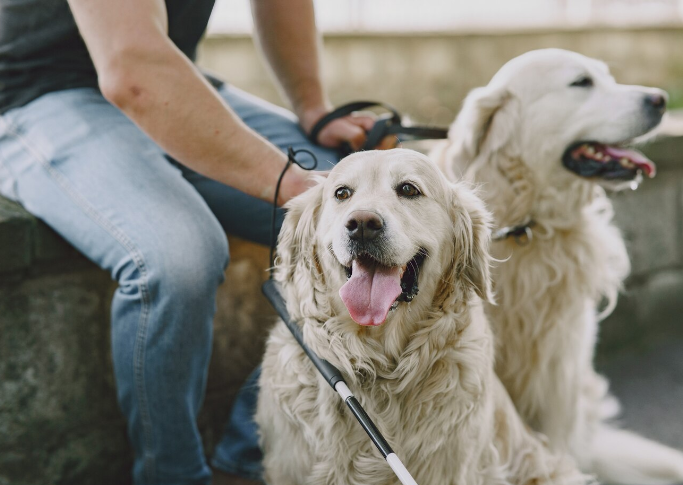
Does Southwest Airlines Accept Service Dogs?
Yes, the airline accepts trained service dogs free of charge.
In compliance with the new rules administered by the U.S. Department of Transportation (DOT) in March 2021, Southwest made changes in its policy regarding Emotional Support Animals and Service Dogs.
The airline no longer accepts ESAs for travel unless as part of their pet policy.
What Types of Service Dogs Does Southwest Accept?
The airline does not restrict the types of service dogs that will be transported. These can include service dogs who support individuals with physical, sensory, psychiatric, intellectual, or other mental disability.
Psychiatric Service Dogs are accepted as service animals!
Documentation Required for Flying with Service Dogs
Service dog owners must present a completed digital or printed U.S. Department of Transportation Service Animal Air Transportation form- either at the ticket counter or at the gate on the date of departure.
The airline points out that the form can not be replaced with other types of documents or ID/training gear such as a harness, vest, certificate for registry, and ID card.
Service Dogs on Southwest - General Requirements
You can board a Southwest aircraft with a fully trained service dog. A service dog is considered a dog, who has been individually trained to perform specific tasks for the benefit of a qualified individual with a disability.
Please note that the airline does not accept service dogs in training, alongside companion animals such as emotional support animals and therapy animals. These can travel as part of Southwest’s pet policy.
Service dogs are required to wear a vest, harness, leash, or otherwise be tethered. They must be under control at all times both at the airport and on the plane.
Service dog handlers need to ensure their dogs are well-mannered, as dogs who pose a direct threat to the health and safety of others or show disruptive behavior will not be allowed to board the aircraft.
Service Dogs At the Airport
Similarly to flying with pets/ESAs, flying with service dogs is also accompanied by certain requirements you need to follow both at the airport and on the plane.
Check-in Process:
You must present the required form to a Customer Service Agent at the ticket or departure gate counter.
Service dog handlers must be prepared to answer questions the airline’s agents may ask to determine the legitimacy of the dog as a service animal. These questions can be related to the tasks / specific work the dog has been trained to do.
With that being said, our school advises service dog handlers to clearly formulate what their service dogs do for them to support them and be able to explain that in detail using their own words.
Service Dog Relief Areas:
Service dog relief areas can be found at all locations the airline serves.
Service Dogs on the Plane
- Passengers with service dogs are allowed to sit anywhere on the aircraft except for an emergency exit seat.
- Service dogs must be seated at their owners’ feet or in their laps. The latter applies to service dogs who are no larger than a child under two years old.
- Service dogs in carriers must remain under the seat in front of their handlers while the airplane is moving on its runway (taxiing); during takeoff, and landing.
- Service dogs must not block any exits or exit paths.
- Service dogs must not extend into the aircraft aisle.
- Service dogs must not occupy a seat, or tray table, or invade a nearby seat.
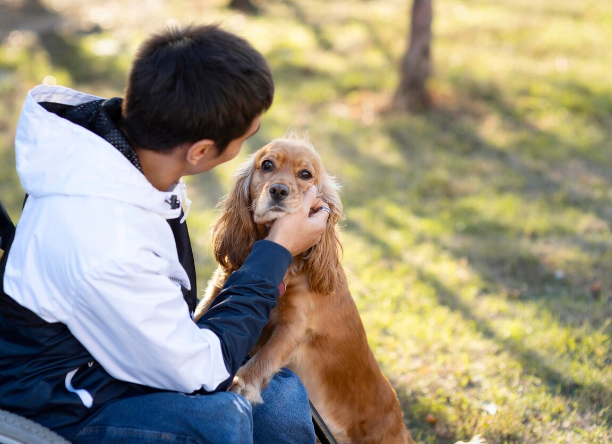
Destination-Specific Requirements for Flying with Service Dogs (Hawaii, Puerto Rico, Internationally)
Service dogs can also be subject to specific requirements and policies based on the destination. Service dog handlers are responsible for the process of reviewing and complying with these requirements.
Hawaii
Please note that the Honolulu International Airport (HNL) is the only point of entry for dogs flying to Hawaii. Exception can be made only if the Hawaii Department of Agriculture has issued a valid Neighbor Island Inspection Permit. The department requires all trained service dogs to be verified with a Customer Service Agent at the city of departure and any connecting cities.
Keep in mind that if you do not have a permit at the city of departure, you will be rebooked to HNL. Dogs who are not allowed entry into any Hawaii destination other than HNL will be sent to HNL to be inspected or be or will be transported out-of-state. This process will be at the owner’s cost.
Passengers flying with service dogs must declare their dogs on the Plants and Animals Declaration Form, which will be handed out and collected by Flight Attendants before landing in Hawaii.
If trained service dogs arrive without the correct documentation, they may be put under quarantine in Honolulu for up to 120 days. This will also be at the owner’s cost.
The airline can not be held liable for any costs if service dog teams arrive in Hawaii without the necessary documentation.
The full text regarding Hawaii’s regulations for animal transportation can be found on the website of the Animal Industry Division regarding Guide & Service Dogs Entering Hawaii.
Also, you can find more detailed information about the documentation you will be required to show and Hawaii’s quarantine program on the following page: https://hdoa.hawaii.gov/ai/aqs/aqs-info/.
Puerto Rico
All the regulations for flying with service dogs to Puerto Rico can be found in the following document regarding Health Requirements Governing the Admission of Animals into Puerto Rico
Internationally
Make sure to familiarize yourself with local laws based on your itinerary, as these may vary.
Additionally, you should review the updates posted by the U.S. Centers for Disease Control and Prevention (CDC) regarding dogs entering / returning to the US. These came into effect on Aug 1st of this year and also apply to service dogs who are flying to the US internationally.
Dogs who enter the US must:
-
appear healthy;
-
be at the minimum age of 6 months;
-
have a microchip;
-
be accompanied by a CDC Dog Import Form Receipt
If you are flying from a high-risk country, you may be asked to present additional documentation.
Where Are Service Dogs Not Allowed to Travel?
According to the airline’s policy, trained service dogs can not fly to/from Montego Bay, Jamaica (MBJ).
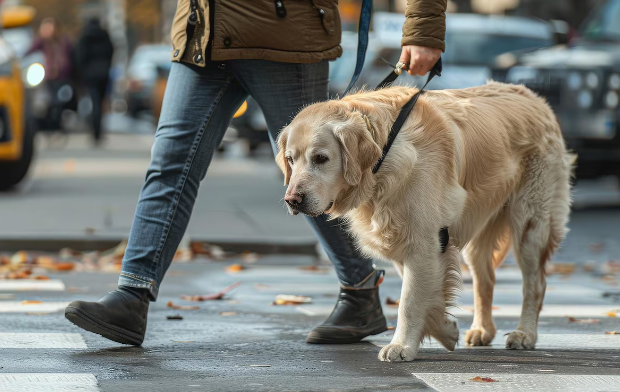
Can You Train Your Own Dog as a (Psychiatric) Service Dog?
Yes, you can!
There are no federal requirements in the US for the specific training process, and dog owners are legally allowed to train their pet dogs as service animals to assist them in their daily lives.
If you go that way, you should consider several factors, though!
Basic / Extended Obedience
You will need to train your dog in basic/extended obedience, including tasks such as ‘sit’, ‘wait’, ‘heel’, calmly walking on a leash, and focus training. You need to make sure your dog has mastered obedience commands before transitioning to advanced service dog tasks based on your specific needs. Take one step at a time and do not rush the process. Move to specific service dog tasks when you feel your dog is ready.
Specific Service Dog Tasks
Specific service dog training can involve various tasks based on the person’s health condition and needs. These can be providing tactile stimulation such as nose-nudging, Deep Pressure Therapy, reminding the owner to take medication, alerting to anxiety or medical episodes such as increased/decreased heart rate, blood sugar levels, ongoing seizures, crowd control, mobility, and balance support, guiding the owner to an exit/safe place, alerting to sounds in the environment, retrieving items, waking up the owner when they have nightmares or night terrors, etc.
Some tasks may be easier to learn by your paw friend, especially if you share a strong emotional connection.
Psychiatric service dog training is easier than other types of service dog training, as the tasks it includes are not physically demanding. However, they also have their specifics, and patience and a consistent approach are needed for training to succeed.
Good Manners in Public
Training your service dog to behave appropriately in public and ignore distractions is a crucial aspect of the process. Trained service animals must remain calm and focused regardless of the stimuli in their surroundings. To ensure your dog has excellent manners in public, you need to work on gradually exposing them to various situations, and stimuli by starting at a low level and increasing the intensity step by step. Rewarding your paw friend for showing wanted behaviors (positive reinforcement) is crucial for successful training. The more encouraged a dog is to display a certain behavior the higher the likelihood is for this behavior to occur in the future.
Proper socialization from a young age is something you should never neglect if you want your future service animal to be reliable, well-mannered, and confident.
Why Train Your Dog With Service Dog Training School International?
The process is entirely self-paced and you can adapt it to your needs.
Our team will be by your side every step of the way, giving feedback, providing guidance, answering questions, and addressing concerns.
Certification and registration are not legally required in the US, however, it can be particularly beneficial in public or when traveling with your dog.
A certificate as proof of training can easily help you verify your dog has undergone training and is a legitimate service animal.
The information for all dogs, who have successfully completed our training program will be available for verification on our website.
FAQ
If there is a delay that would prevent your service dog from being released from quarantine until the following day, the airline will re-book you on the next available flight upon request.
“If your flight from U.S. mainland to Hawaii is diverted to a Hawaii location other than your scheduled destination, a Customer Service Agent will meet your inbound flight and ensure your dog remains in the gate area until you have boarded the final flight to your destination.”
You are allowed to take a cremated pet remains onboard as a carry-on item under certain conditions. Remember that the airline does not accept any remains as checked baggage.
The airline allows fully trained law enforcement dogs and search-and-rescue dogs for transportation, at no cost. However, they need to be accompanied by their handlers on official business. A letter of mission and a copy of the animal’s certification must be presented to a Southwest Customer Service Agent at the airport.




